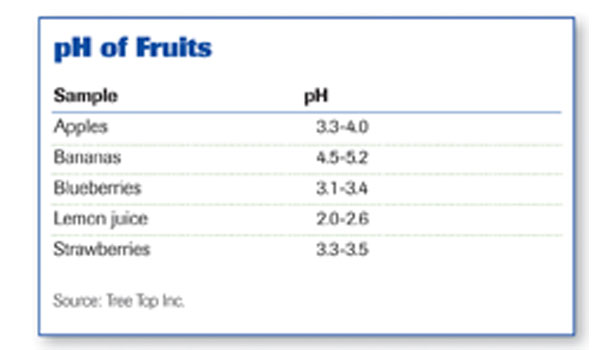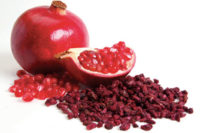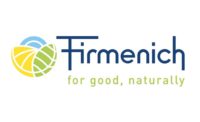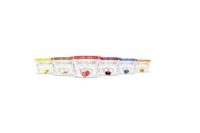Fruit: a Natural Preservative
Fruit ingredients are a natural preservative to help extend shelf life. They help control moisture by binding free water and lowering moisture. They also can thicken products and are easy to use in processing.

Factors that determine the shelf life of a food product include moisture control or water activity, pH, and use of antimicrobials and antioxidants. As top drivers of food selection, according to IFIC and Nielsen surveys, fruit can help control the limiting factors for shelf life: staling, oxidation, microbial spoilage, color or flavor degradation, loss of key nutrients and moisture changes. Hurdle technology, where multiple barriers to spoilage are used, has been successful in increasing shelf life of foods.
Kevin Holland, Ph.D., TreeTop Inc., in his presentation titled “More Fruits, More Forms, More Possibilities/Natural Preservative,” explained: “Shelf life can be extended by various hurdles, including pH, water activity, processing or storage temperature, and preservatives. Initial numbers of microbes are important to consider when testing hurdles. Microbes require a specific pH range in which to survive, grow or thrive. Outside of this range inhibits growth. Below pH 4.6 inhibits many microbes, but not all. Fruit is typically below pH 4.6, so its addition to a formulation adds a hurdle for microbes.”
Water activity, or measure of available water in a food, helps determine shelf life. Microbes need water to grow, but not always to survive.
“Water activity is key for chemical reactions to occur, and most bacterial growth is inhibited at water activity less than 0.90. Most yeast are inhibited at less than 0.85; most fungi and S. aureus are inhibited at less than 0.80; and extreme yeasts and molds are inhibited at less than 0.60 water activity,” explained Holland.
Antimicrobial compounds, like sorbic acid, which was first discovered in rowan berries, work to inhibit spoilage organisms in foods. A variety of berries contain benzoic acid, while honeysuckle, strawberries and blueberries contain methylparaben. Ongoing research into fruit antioxidants shows promise for use in several applications.
Dried fruits have several factors that can help prolong shelf life. High fiber contributes to their water-absorbing and -binding capabilities. Sorbitol adds humectancy and helps control water activity. The natural sugar in dried fruit adds sweetness, humectancy, surface browning and water activity control. Acids in dried fruit contribute to flavor enhancement and microbial inhibition.
Fruit juices, pureés and concentrates can add sweetness, acid, water activity control, color and flavor. Product application examples include a quinoa granola bar featuring fruit to control water activity; a fruit juice beverage utilizing fruit as a natural sweetener and pH control; and variegate fruit fillings that add value with dynamic flavor, visual and textural properties. Fruit powders and granules can be used for toppings and moisture control in many applications.
Holland and Lynch explain that in bars, fruits act as natural preservatives providing stability, water binding, pH control, added fruit servings, nutritional benefits, and both soluble and insoluble fiber. Bars can be either cold pressed or baked. Cold-pressed bars are extruded or formed with a water activity of about 0.65 and moisture of 12 to 14%. These are chewy, often with grains, seeds and nuts. Baked bars are baked, cut and dried; have water activity levels of approximately 0.55 at 3 or 4% moisture. These are crispy and crunchy and often have glazes, fillings or streusel toppings.
In summary, fruit ingredients help control moisture by binding free water and lowering moisture. They also can thicken products and are easy to use in processing. Fruit powders are available from apple, pear, mango and many other fruits. Particle size varies depending on application.
-- Summary by Elizabeth Pelofske, Contributing Editor
“More Fruits, More Forms, More Possibilities/Natural Preservative,” Kevin Holland, Ph.D., Tree Top Inc., kevin.holland@treetop.com, 509-697-7251
Looking for a reprint of this article?
From high-res PDFs to custom plaques, order your copy today!





